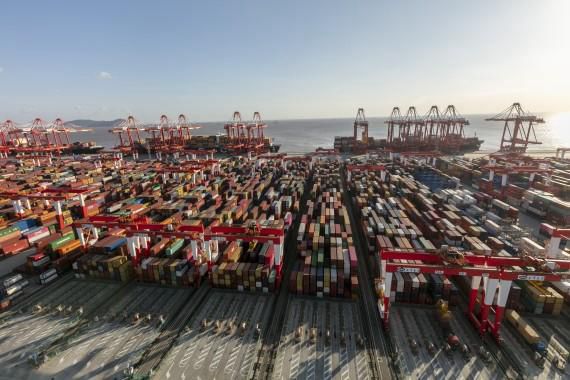According to the latest data, under the impact of COVID-19, the export of many major economies to China in 2020 will buck the trend and become an important support for their economic resilience. International observers believe that China's further opening-up and sustained economic recovery have led to a pick-up in demand, providing a broader market and more development opportunities for the rest of the world.
According to data released by Eurostat in mid-February, due to the epidemic, EU exports in 2020 will drop by 9.4% compared with the previous year, while exports of goods to China will increase by 2.2%. Among the EU's top 10 trading partners in goods, China is the only one that has achieved two-way growth in trade.

Preliminary statistics released by Japan's Ministry of Finance in late January showed that Japan's exports in 2020 were 11.1% lower than the previous year due to a sharp drop in overseas demand for cars and other products. But exports to China rose 2.7 per cent for the year as a result of strong growth in non-ferrous metals, cars and plastics as the Chinese economy recovered rapidly.
China's trade with Latin America and the Caribbean has maintained a steady performance. In 2020, Latin America's exports to China will grow by 0.1% over the previous year. The United Nations Economic Commission for Latin America and the Caribbean said in a report that due to the epidemic, Latin American exports will drop by 13% in 2020, including 14% to the United States and 13% to the European Union. However, due to China's rapid control of the epidemic and recovery of economic growth, the region's exports to China continued to grow after March 2020, driven by agricultural and mineral products exports.
As the largest economy in Latin America, Brazil's exports to China have remained resilient. According to a report released by Brazil's central bank, the country's foreign trade surplus in 2020 will increase by 2.9 billion US dollars compared with 2019, boosted by the good performance of primary product exports to China.
The report said Brazil's exports showed resilience last year, thanks to strong performance in exports of primary products to China, such as soybeans and iron ore. Exports to China accounted for an increased share of exports in all regions of Brazil, "indicating that the impact of Chinese economic activity on Brazil's foreign trade has generally increased".
Observers believe that China, with its huge market of 1.4 billion people, is an important engine driving global economic growth. As the only major economy in the world to achieve positive growth in 2020, China's rapid economic recovery has strongly promoted the recovery of global demand.
Joost Verbek, senior analyst at consultancy CJC, said China was playing a "very important role" in the EU's economic return to normal, with some European companies, especially in the automotive and luxury goods sectors, benefiting from the recovering Chinese market.

Bruno de Conti, a Brazilian economist, said that while other major trading partners in Latin America have been pushed into recession by the epidemic, China is the only major economy in the world that is growing positively in 2020, which is good news for the region's exports.
At the same time, China has proposed to open up to the outside world in a wider range, in a wider range of areas and at a deeper level to better participate in international economic cooperation. This will enable more countries and companies to share in China's huge open market and development opportunities.
China has made great progress in optimizing its business environment and opening up wider to the outside world, and the Chinese market will become more and more attractive as it opens to the outside world at a higher level, said Darrell Shen, president of Honeywell's global high growth region. (Participating journalists: Li Jizhi, Liu Chunyan, Xi Yue, Gong Ruohan, Pan Geping, Pan Lijun, Zhang Mocheng)

